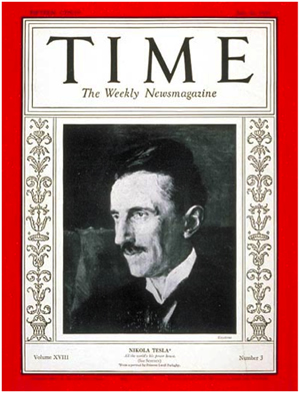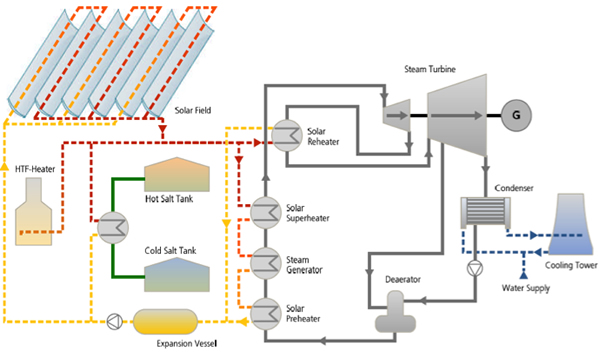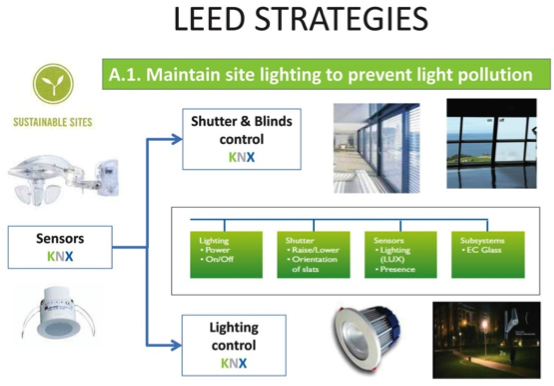 By Jesús Arias García, KNXin.
By Jesús Arias García, KNXin.
Nikola Tesla, one of the most prolific engineers of our time and father of alternating current, was a fan of renewable energy. His new and state-of-the-art technology spawned the modern city, and was responsible for one of civilization’s milestones: the first-ever hydraulic power plant. Powered by the Niagara Falls, this helped give industry in the USA a real boost.

Tesla’s empathy with Buddhist philosophy made him think of the Earth as a balanced system, where using resources wisely was extremely important. Coal and other fossil-based fuels did not fit with that way of thinking.
Even the early car industry fluctuated between oil and electricity. Unfortunately Henry Ford popularised the petrol engine with his best-selling Model T, and the burgeoning oil industry did the rest. But this is changing, funnily enough, thanks to an electric car company called Tesla Motors.
Solar Power
If, one century later, we were to say that we can now transform 320GWh (320,000,000kWh) of energy per year using a single power plant thanks to the Sun, most of those involved in the petrol industry would probably not believe it. But it happens to be true, and is sufficient to power 30,000 US households, given the average 10,837kWh annual consumption per household.
The South African government is also aware of this fact. That is why it is currently busy building two enormous power plants based on solar energy, namely Khi Solar One (50MW of power, with an estimated 180GWh of annual energy production) and KaXu Solar One (100MW of power, with an estimated 320GWh of annual energy production).

The Need for Efficient Buildings
If you have a desert with 350 days of sunshine per year, would you not take advantage of it? South Africa belongs to the so-called BRICS (Brazil, Russia, India, China and South Africa) emerging national economies, and knows that the less you depend on scarce and monopolised resources such as gas and oil, the better. But, of course, there is a price. The cost of this amazing technology supplying 100MW of peak power is USD860M (about EUR678M). Of course conventional power plants are not free either, and they require a constant supply of resources, the price of which is increasing more and more.

None of this is cheap – energy consumption has a price, whatever the method used to generate it, which is why governments are interested in energy efficiency. It is that simple. If your cities are twice as efficient, your country will only require half of the number of power plants. So, the bottom line is that we need efficient buildings, and that is why there is an increase in legislation that affects the way buildings are built. Furthermore, there are more and more financial advantages in improving a building’s efficiency.
The Role of KNX
KNX system integrators know that selling this technology is not easy, and that clients, especially in the commercial market, want to see an immediate impact on their balance sheet. While long-term savings are great, most of people want savings now, so incentives such as subsided retrofits and tax rebates will help. This growing trend, based on the premise that all of the players, from governments to end users, assumes an increase in the use of active systems, such as KNX, that help to save energy.
The KNX Association is driving a smart movement based on the concept of the Smart City. Since buildings will not be merely consumers of energy, but also producers of it, and with electric transport becoming part of the city layout, a technology standard such as KNX has a big role to play. It also helps that large manufacturers involved in energy distribution, such as Siemens and ABB, support KNX.
Does everything have to depend on legislation? Fortunately not. For some years now, I have been a proponent of the synergy between green building certification and KNX, but while green building certification may outline what you need to achieve, it does not say how to do it. Clearly, if a green building certification is to be respected, the specifications must be brand-independent. That is something that probably only KNX can fulfil, as it is the only standard that offers solutions to pretty much any system requirement within in the building.

Conclusion
I am seeing more and more tender documents where standards are requested regarding energy management, followed by the words ‘KNX’, ‘Modbus’ and ‘DALI’. Furthermore, KNX is becoming a cornerstone within the BMS (Building Management System) concept, and highly-demanded in commercial and large projects.
I see a future in which there is a mix of concerns about natural resources, investment in renewable energies and in energy efficiency in cities, supported by legislation and green building certifications that bring some normalisation to the industry. The future for green buildings looks bright – as bright as the light that Tesla introduced into our lives!
Jesús Arias García is a freelance Engineering Consultant for KNXin, a consultant engineering firm specialising in KNX technology and green buildings. His co-authored book ‘KNX for LEED‘ is available through the KNX Online Shop.
You are welcome to comment on this article. See below.














